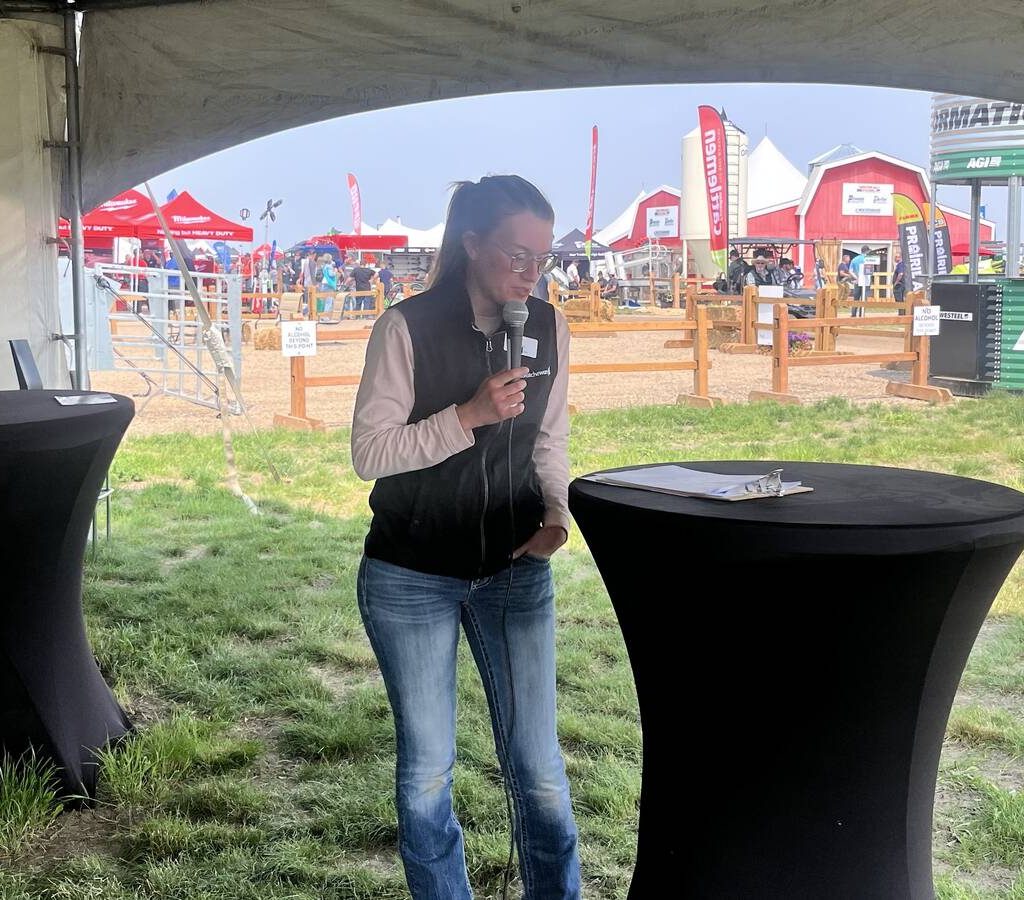Ag in Motion speaker highlights need for biosecurity on cattle operations
Small changes can have big effects on your farm’s biosecurity
| 2 min read

Glacier FarmMedia—At Ag in Motion 2025, the well-being of your cattle and your operation are important.
Tessa Thomas, a livestock and feed extension specialist with the Government of Saskatchewan, spoke about biosecurity at the Livestock Happy Hour at AIM on Tuesday, July 16. She said while biosecurity in the beef industry is not as thorough as in other livestock industries, it is just as important.
“Disease spread may not be on top of mind,” she said.
Follow all of our Ag in Motion coverage at the Western Producer.
“You get kind of used to your day-to-day routine, but you never know when disease can strike, and just some of our day-to-day actions can be improved to prevent that spread.”
When certain diseases spread, they can impact the state of Canada’s imports and exports, which means it is important to know what is going on when it comes to disease on an operation.
Thomas recommends having a biosecurity checklist. Many small things can be done, such as:
- Disinfect your boots and trailer.
- Keep animal movement and health records.
- Work with a vet.
- Have a herd health management program.
- Avoid bringing in dairy calves or calves from other farms.
- Isolate new animals.
- Isolate animals showing signs of illness.
- Avoid shared fence lines with other ranches (if possible).
- Have a disease response plan and a plan for disposing of dead livestock.
- Clean drinking facilities and feeders/bunks.
- Have a written biosecurity plan in place.
“There are a lot of small steps that we can take to make our farms just a little bit more biosecure,” Thomas said.
When disinfecting your boots and trailer, using household bleach is good enough, unless the disease is parasitic. She advised using a 1:32 ratio of water to bleach, but if you are concerned about disease, use a 1:10 ratio.
She also highlighted investigating deaths to figure out exactly what may be going on.
“Investigating deaths is something I know some people struggle with. I know there’s no way to save that animal, so sometimes it’s hard to put extra money out when they’re already dead, but it’s key to understand why that animal died, and it could save you a lot of money in the end,” Thomas said.
Though the checklist may seem like it consists of a lot of things, Thomas said the biggest thing with a biosecurity plan is that it doesn’t have to be complicated.
“You don’t have to go out of your way to make a really complicated thing. It’s easier to make something simple that you can follow and follow through with because small changes become habits. With big changes, sometimes it’s hard to follow through with things, so it’s always better to start small.”


